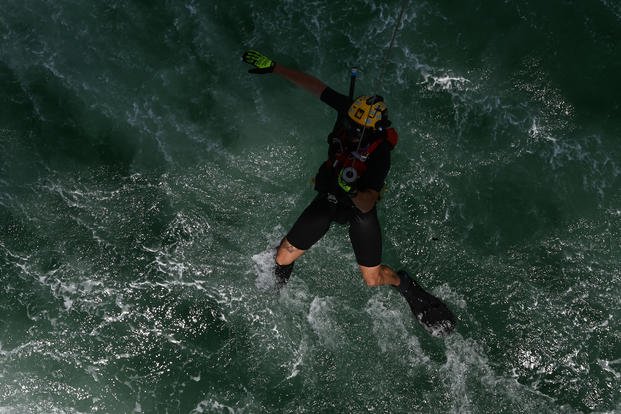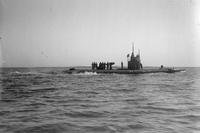Many occupations in the U.S. military require you to be competent in the water, whether you are scuba diving, combat swimming or rescue swimming in any of the service branches. All of those occupations require above-average pool skills and water comfortability.
Here is a question from a Coast Guard rescue swimmer recruit trying to work on some water confidence to help master the many challenging tasks that are part of Rescue Swimmer Training.
Hey Stew, I'm training to be a Coast Guard Rescue swimmer. Do you have any tips on buddy towing or water con in general? Thank you! Darren
Swim and Tread
You need to start improving upon many water skills. Swimming technique and treading water are, by far, your most important starting points. Do not just stop at "I can swim and tread water": you should practice swimming and treading in the pool 4-5 times a week to become more efficient and improve your conditioning.
You must be able to tread for 10 minutes or more easily, keep your hands out of the water while doing it, and swim a yard or meter per second for short and longer distances. For instance, 500 yards in 500 seconds equals an 8:20 swim pace. This is a solid standard to shoot for while using freestyle, breaststroke, or sidestroke. A good standard is 500 yards in under nine minutes. Then keep training so you can do 1,000 yards in 18 minutes and 2,000 yards in 36 minutes or less.
Take lessons and get coaching from people who swim or do water polo if you really want to learn from the best in these skills. Luckily, you can find videos online from coaches showing proper techniques of swimming, the different strokes, treading and other water confidence-building skills if you do not have a local coach to assist you. You can self-teach these skills if willing to do the work. Have someone videotape you so you can see whether you are doing these activities correctly.
Water Confidence Skills
Underwater swimming, buddy tows, brick swimming and drownproofing are needed activities that should be added to your swimming sessions. Use any or all of these skills as warm-ups and cooldowns to your swimming conditioning workouts, primarily 4-5 days a week. But take an extra day and work on any water confidence skill separately, especially if you are having issues.
Here are some previously created articles from the Military.com Tactical Fitness Section to assist you with structuring these additional activities into your swim sessions:
- My Favorite Water Con/Swim Workouts
- Drownproofing Workouts
- Treading Water Tips
- Swimming in Uniform
- Special Ops Swimming Training
- Swimming with Fins on Leg Days
- Don't Forget Swim PT: Adding push-ups, flutter kicks on the pool deck during swim workouts
The No. 1 rule with any swimming or water confidence training event is never to swim alone. Make sure you have a lifeguard at least watching you or, even better, have a buddy swimming alongside you the entire time. The buddy tows can be added if you have a person to practice rescuing.
The second rule is that you have to practice these skills. The saying goes, "Don't practice until you get it right. Practice until you cannot get it wrong." This takes time and persistence.
Stew Smith is a former Navy SEAL and fitness author certified as a Strength and Conditioning Specialist (CSCS) with the National Strength and Conditioning Association. Visit his Fitness eBook store if you're looking to start a workout program to create a healthy lifestyle. Send your fitness questions to stew@stewsmith.com.
Want to Learn More About Military Life?
Whether you're thinking of joining the military, looking for fitness and basic training tips, or keeping up with military life and benefits, Military.com has you covered. Subscribe to Military.com to have military news, updates and resources delivered directly to your inbox.






















